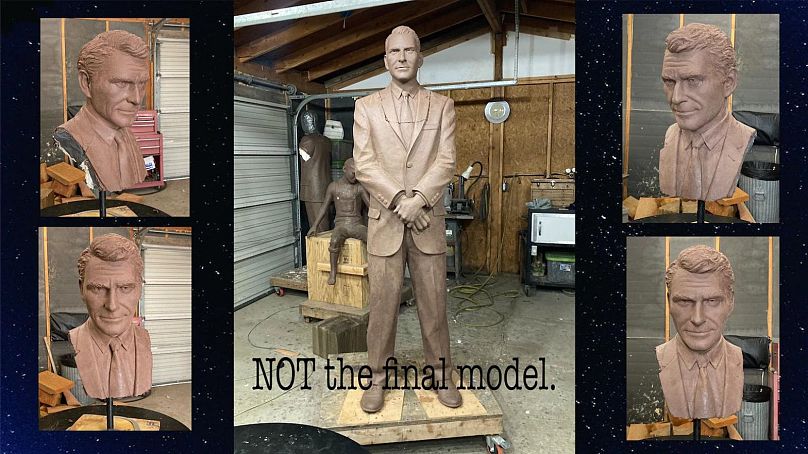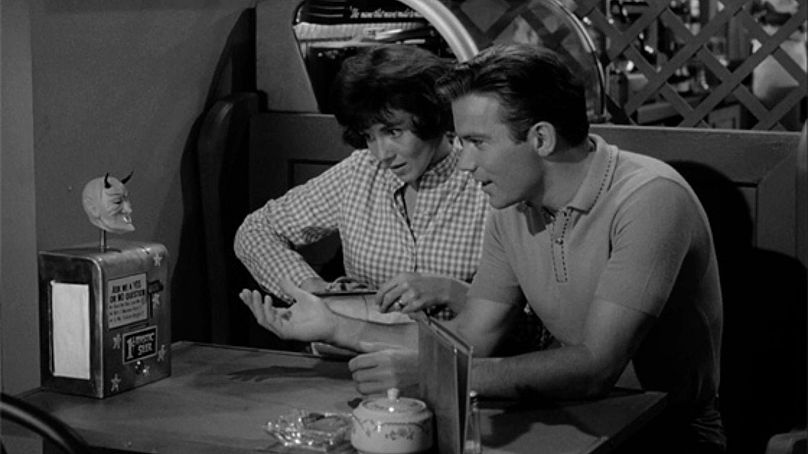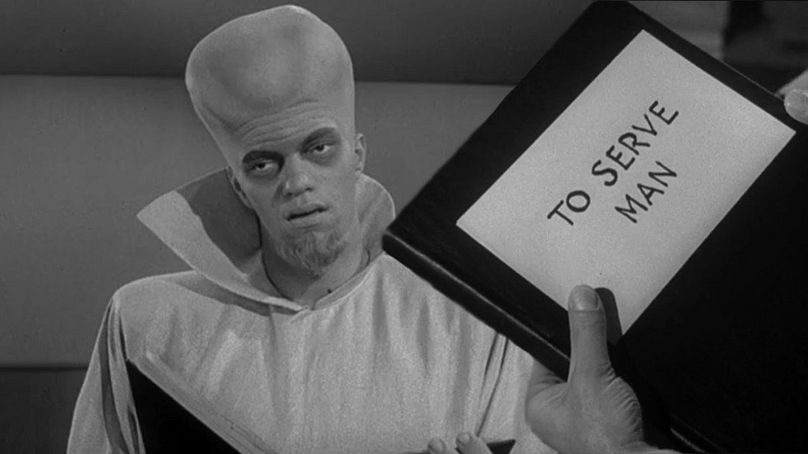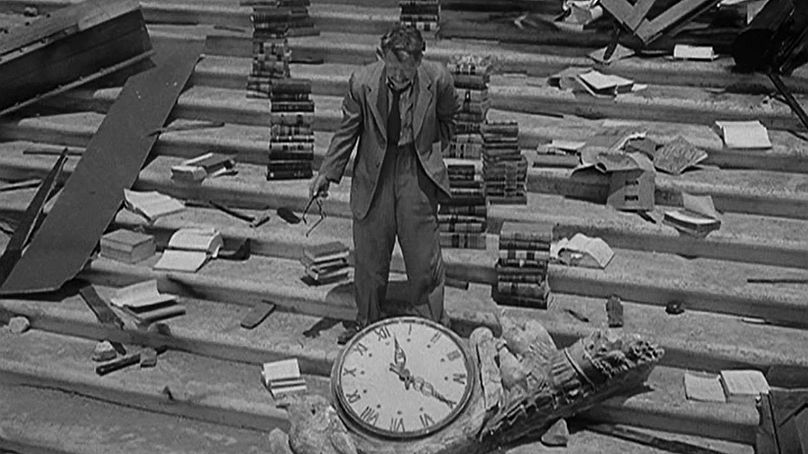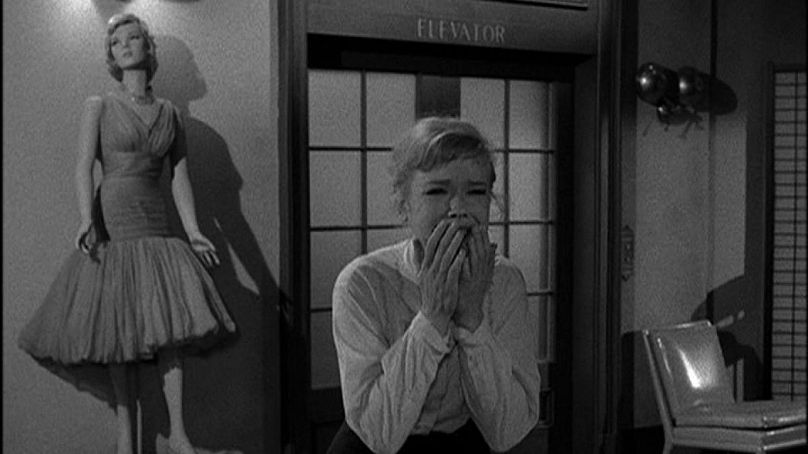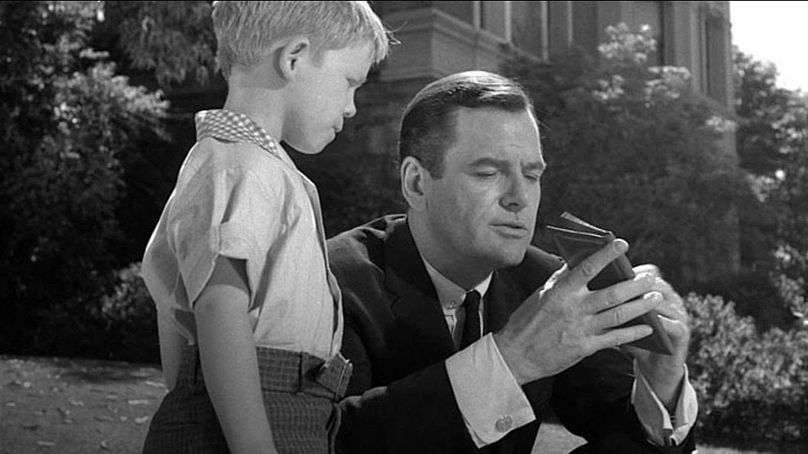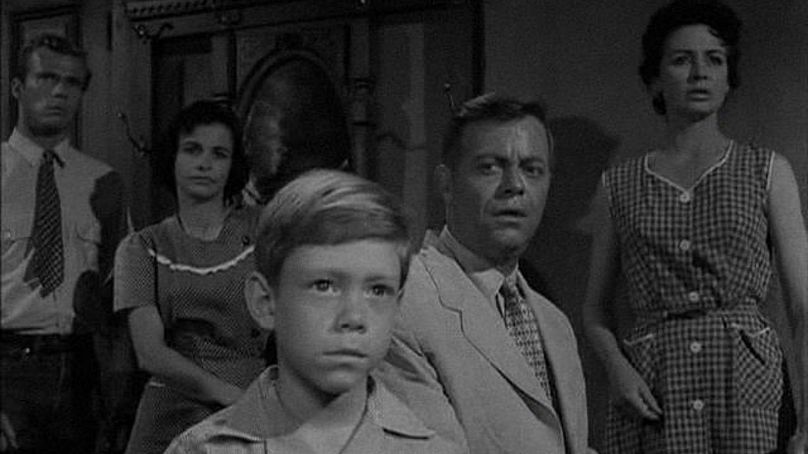'The Twilight Zone' creator Rod Serling is to be honoured in his hometown. But have you ever entered The Twilight Zone? Here's our guide to the must-see episodes
A life-sized statue of The Twilight Zone creator Rod Serling is set to be erected in Binghamton, New York, where Serling spent much of his childhood.
The hope is to unveil the statue in time for Serling's 100th birthday, which will be on 25 December 2024… And it’s about damn time.
The writer / producer, who also developed The Planet of the Apes and Seven Days in May , left an indelible mark on sci-fi media and was a staunch activist who repeatedly butted heads with Hollywood over issues like censorship and racism.
The statue is being erected by The Rod Serling Memorial Foundation, who are raising funds on Kickstarter.
"Rod Serling was almost certainly the most prolific writer in television history, with nearly 250 scripts produced, and he is the only writer to win six Emmy awards for best dramatic writing," said Nicholas Parisi, who is the president of The Rod Serling Memorial Foundation.
"Rod Serling and the Twilight Zone are still relevant because the themes that Rod dealt with are timeless, whatever package in which they may have been presented."
Serling's The Twilight Zone aired in 1959, and it changed the face of television and the bigger pop culture landscape. It’s one of the most well-written TV shows of all time, dealing with heady themes and provocative commentaries on society through the lens of creepy stories that remain terrifyingly potent to this day.
The original run ended in 1964, and it went on to inspire countless other shows, from The Outer Limits, Tales From The Crypt to The X Files and Fringe. And while a 3-season second iteration of the series saw the light in 1985, followed by an unsuccessful reboot in 2002 and Jordan Peele’s 2-seasons-and-you’re-out version in 2019, there’s simply no denying that nothing compares to Serling’s stellar first five seasons.
Not familiar with the show?
We’ve got you covered, as two of the Euronews Culture team are Twilight Zone fans – possibly obsessives. Jury's out. Here are our favourite episodes, the ones you absolutely must see.
Nick Of Time (Season 2, Episode 7)
This is quite possibly my favourite ever episode of The Twilight Zone due to the fact it takes place in one particular setting: a small diner booth, where a fortune teller machine’s bobble-headed devil grins conspicuously.
I’ve always loved kitsch diners. Not only for their retro aesthetic, but also for what they can represent; these points of life within liminal-like space, comforting hubs of hot coffee and pie welcoming the lost and lonely between the long stretches of empty road that make up much of rural America.
It’s the perfect location for ‘Nick of Time’, as we once again venture to the edge of the Twilight Zone with a very young William Shatner and Patricia Breslin playing Don and Pat Carter, two newlyweds who arrive at the Busy Bee Café after their car breaks down en route to New York City.
Don is instantly intrigued by the fortune machine, which answers any yes or no question for a penny. Asking whether he will get a promotion at work, the machine responds: “It has been decided in your favour.” Immediately calling his office, Don finds out that he has indeed been promoted. This sets in motion a swell of superstition, as the questions and answers become increasingly eerie.
It is the machine’s prediction that the couple should not leave the diner until 3pm that forces them to contemplate the power of their beliefs. While Don sits in fear and indecisiveness, worrying about the possibility the machine could be right, Pat argues for reality and faith in one’s self: "It doesn't matter whether it can foretell the future. What matters is whether you believe more in luck and in fortune than you do in yourself.”
Ultimately, Don takes courage from Pat and the two head back out into the world, a future of uncertainty ahead but trust in their togetherness. Meanwhile, a distressed elderly couple enter and sit at the same booth, becoming more and more upset with every penny slotted.
For me, the fortune teller machine is the perfect metaphor for anxiety. Like intrusive thoughts, its answers slip into your mind then tangle your thoughts up in terror, convincing you they hold some sort of power. There can be a strange comfort in believing this, as though it gives us control over our fate. But ultimately, it keeps us stuck in fear. Fear of change and fear of the unknowns outside of our past.
While we’re led to believe that the elderly couple are struggling to escape from their more ingrained views of life, desperately searching for certainties, the younger couple brave whatever’s in wait, realising it’s the only way forward and that nobody, not even a napkin-holding fortune teller, knows the future until they’ve lived it. Amber Bryce
To Serve Man (Season 3, Episode 24)
Picture the scene. A seemingly benevolent (and definitely big-headed) alien civilization descends from the heavens and, contrary to all expectations, they are delightful. The 9-foor-tall telepathic Kanamits want to solve all our woes and wish to “serve” us.
The apparently disinterested visitors, who carry the titular book, even invite members of the human race to travel with them to their home planet. What’s not to get excited about?
Well, a pair of cryptologists (Susan Cummings and Lloyd Bochner) are dubious and decide to decipher their manual, only realise too late that the word “serve” can have multiple meanings. This yields one of the most famous black-comedy punchlines in the history of television: “It’s… It’s a cookbook!”
Chances are you’ve probably heard of this devilish twist ending even if you haven’t seen ‘To Serve Man’. I have to admit that I frequently use the line out of context during social occasions, and get all giggly about it. Which is probably why I’ll die alone clutching my Twilight Zone boxset. The punchline has crystallised into the pop culture subconscious, much like “Soylent Green is people!” (another fun one to randomly shout out during parties), and this memorable episode shines due to its simplicity and playful bleakness.
This episode has always stuck with me because it encompasses why I find myself returning to the series so frequently. Like much like all of The Twilight Zone, ‘To Serve Man’ features commentary on human nature which borders on existential horror and has allegorical weight to spare. It’s one of the show’s main joys, as well as how depressingly relevant it remains to this day. ‘To Serve Man’ does this brilliantly, as it not only puts humanity in its place, stressing how we can come from stardust but end up as dessert in the grand, non-geocentric scale of things, but uses dark comedy to question the audience. This features more prominently (read: maybe a smidge heavy-handedly) in this episode, as one protagonist breaks the fourth wall at the end to memorably query: “How about you? You still on Earth or on the ship with me? Really doesn’t make very much difference, because sooner or later, we’ll all of us be on the menu… All of us.”
So, beware of intergalactic beings bearing gifts. And keep a healthy dose of critical scepticism alive. After all, who would ever blindly follow someone promising to solve all of our problems, only for that person to lead us down the wrong path and make things significantly worse? Surely not us humans. Right? Right? David Mouriquand
Time Enough At Last (Season 1, Episode 8)
As an introvert that prefers the company of my cat and cosy box sets, this episode of The Twilight Zone not only resonated with me, but has stayed with me as a stark warning against becoming too isolated from society.
‘Time Enough at Last’ tells the story of timid bookworm, Henry Bemis, played by Burgess Meredith. By day, he works in a bank, his head always buried in books - much to customers’ and his boss’s annoyance. In fact, all Bemis can think about is books. When he’s not reading them, he’s trying to tell people about them.
This constant detachment from reality causes strain on his personal relationships, which then further reinforces Bemis’ desire to sit in escapism. In fact, his exasperated wife becomes so tired of his reading obsession that she plays cruel jokes on Bemis, like crossing out the text on every page of his poetry book then ripping pages from it in fury.
One lunch break, Bemis decides to read undisturbed in the bank’s vault until he’s suddenly knocked unconscious by a huge explosion, moments after seeing a newspaper headline about an ‘H-Bomb Capable of Total Destruction.” Upon awakening, he heads out into a deserted world, everyone around him dead and the city turned to rubble. Hit with the reality of his aloneness, Bemis grabs a gun and contemplates killing himself - until he spots the remains of the public library.
Hundreds of books sit before him with “time enough at last” to read as many as possible. But then, in one of the most memorable TV show endings of all time, Bemis’ glasses fall off and shatter. Unable to see a thing, Bemis sobs, surrounded by the objects he loves but cruelly deprived of any way to enjoy them.
For a long time I viewed this episode as mean. Bemis seemed like a nice man that had been bullied and beaten down by other people, so sought solace in the pages of novels - then the universe took even that away, a harsh reminder of life’s unfairness.
But now I see it differently, especially following years of pandemic-induced lockdowns. People, although complex and sometimes nasty, are essential to our purpose. When we choose instead to hide in hobbies and avoid any social interaction, we create an empty world around us, devoid of true connection - or anyone to help fix our glasses. AB
The After Hours (Season 1, Episode 34)
I’m going to keep this one brief, as it’s the episode with the mannequins.
Yes, that terrifying one that has haunted my nightmares ever since I saw it on TV at the tender age of 6. To this day, it makes going through malls or shopping centres something of a nail-biting endeavour.
‘The After Hours’ follows Marsha (Anne Francis), who heads to a department store with the prosaic errand of buying a present for her mother. A gold thimble, to be precise. She is directed to a special express elevator which takes her to a deserted ninth floor. There, a coolly charismatic and seemingly clairvoyant saleswoman (Elizabeth Allen) greets her and singularly annoys her with one specific question: “Are you happy?” Marsha storms off, tries to file a complaint, and ends up accidentally locked inside the store after hours. She’ll then discover that the ninth floor isn’t what it seems and that everything she held true is turned upside down.
As creepy as this episode is, it’s also quite profound. It delves into what happiness is – whether it’s the things we yearn for or the contentment found in accepting what we already have (or are). As with a lot of The Twilight Zone, ‘The After Hours’ comments on the blind absolutes we cling onto, but adds an extra layer about the human aspiration for “normalcy”, as well as a meditation on the struggle for female identity and emancipation during the 60s. The episode slyly delves into the fact that women have been oppressed, chiefly through certain visual cues – as well as the fact that men are in charge of the store.
It’s a fascinating story that once again shows The Twilight Zone’s unparalleled knack for tying science-fiction and horror into everyday American life in order to better depict fears of the time, as well as present-day anxieties. That, and it’s really frightening – even once the impact of the twist has settled. DM
Walking Distance (Season 1, Episode 5)
I remember very clearly the first time I realised I missed the past, and could never go back.
I was around 13-years-old and watching an old home movie of my five-year-old self sitting in a hammock in the garden, blue skies above, my great aunt rocking me back and forth. Life had started to become weird with the advent of puberty, and seeing this moment in time, where I was small and safe, still unaware of the world’s hurts, sent a sharp sickness through me as I realised the loss that comes with our inevitable march forwards.
Of course, now I look back and miss being 13.
Nostalgia in general has become a chronic part of our culture, which perhaps makes this particular episode of The Twilight Zone more prescient than ever. It concerns Martin Sloan, played by Gig Young, a 36-year-old advertising exec that stops to have his car serviced within walking distance of his hometown.
Wandering back through the familiar streets of Homewood, it seems as though nothing has changed in the last fifteen years. Even the ice cream sodas are still the same price. (Cries in cost of living crisis.)
Sloan then sees himself as a child, confronting then scaring himself away. His parents are similarly dismissive, disturbed by this grown man they consider a total stranger knocking at their door. It’s only when Sloan sees the date on the neighbour’s car that he realises he truly is back in the year 1934.
When attempting to talk to his younger self again, little boy Sloan falls off a carousel and hurts his leg, which results in adult Sloan experiencing the same pain, rippled through time. His father later joins him, having seen the 1960 expiration date on his driver’s licence and now believing his story. He advises his son to return to the future instead of dwelling in the past, reminding him that for all the joys of the past, adulthood can hold just as much reward.
As Sloan makes his way back to the gas station, he finds that the ice cream sodas have now gone up in price. The present day has returned, only the limp in his leg a reminder of his recent trip into the Twilight Zone. As he drives away, it seems as though he’s learnt to embrace his life as it is now, looking ahead rather than longing to go back.
While I often wish I could walk through my memories, just sitting quietly in a rose-tinted time for a while, this episode always reminds me that even if everything could be the same, it wouldn’t be the same, because I'm different. I would see things differently, a stranger to a familiar place. I would miss the life I have now, despite all of its difficulties. And one day, I will miss this moment too. So we keep pushing forward, dipping into nostalgia now and then for comfort but knowing when to, metaphorically speaking, get back in our car and focus on the highway ahead. AB
It’s A Good Life (Season 3, Episode 8)
I love kids. Especially my nephew. He’s a nearly-four-year-old agent of chaos who I constantly urge to embrace his inner Tasmanian Devil.
However, there are times when this episode of The Twilight Zone tends to play in the back of my mind, and it reminds me to steer him towards empathy and ask him to stop being a wee miscreant.
Because make no mistake – if you don’t like children, the wonderfully titled ‘It’s a Good Life’ will not rekindle any burrowed sentiments of sympathy for ankle-biters.
The episode focuses on Anthony Fremont (Bill Mumy, Lost in Space’s Will Robinson), a petulant child who has godlike powers and can kill anyone he chooses through telepathy. Think of him as a tantrum-throwing Thanos, and you’re pretty much there.
Actually, that’s unfair. This child makes Thanos feel perfectly misunderstood.
Anthony is essentially the ruler of the town of Peaksville, Ohio, where no one can even think negative thoughts about him, because he’ll know. And when he knows, he gets capricious, turning his would-be foes into a jack-in-the-box before sending them to a cornfield.
While Serling specialized in socio-political allegories and existential commentary, some episodes are just there to give you the willies. ‘It’s a Good Life’ is all about giving you the willies. It’s an all-too-relatable tale for any parent (or uncle) who has been a patient witness to a tantrum-throwing bundle of joy, and even if the episode isn’t trying to make a grand point about anything (aside from showing that power corrupts, no matter what age you are), the storytelling here is perfect. Simple, effective, and very scary. Serling even confirms his lack of metaphor-chasing during his closing monologue: “No comment here, no comment at all. We only wanted to introduce you to one of our very special citizens, little Anthony Fremont…”
The performances throughout this episode are spot-on, especially from the miserable and oppressed adults who need to keep their fixed smiles and happy thoughts at all times in order to avoid the wrath of Damien 2.0.
Speaking of Damien, this 1961 episode helped establish the evil kiddie / powerful child antagonist in horror – and showed the destructive potential of onscreen kids. Granted, Rhoda from 1956’s The Bad Seed was the first, but the hugely popular The Twilight Zone could be said to be partly responsible for all the lovely lovely chills experienced during Pet Sematary, The Omen and – my personal favourite – The Exorcist.
And for that, as well as for this majestic piece of editing and shadow play, Mr. Serling, I bow to thee. DM












